What Your Nails Say About Your Health
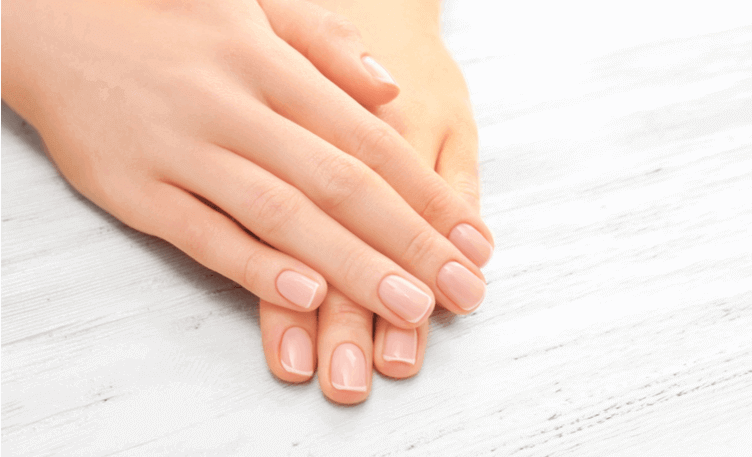
Healthy nails are usually smooth and without any discolouration. Nail health is often an indicator of irregularities in your general health and nutrition. While these abnormalities are generally not related to major health concerns, they can serve as good early warning signals for consulting your doctor.
When Your Nails Change Their Texture
Brittle Nails
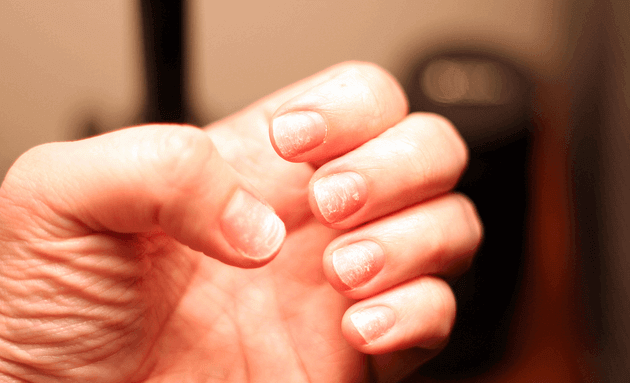
Known as Onychoschizia, rough and easily-breakable nails are the most commonly reported nail problems, especially in women. They are caused by frequent wetting and drying of your fingernails. It can also be caused due to an iron deficiency or hypothyroidism. Wear protective gloves while washing utensils or cooking, and apply hand lotions.
Weak or Soft Nails

Soft and easily-chipped nails are mostly caused due to overexposure to moisture or chemicals like detergent, nail polish remover, nail treatment gels etc.
Avoid as many chemicals as you can, and let your nails heal naturally. Weak nails are likely to be caused due to a deficiency in Vitamin B, Calcium, Iron, or Fatty Acids. Consult your doctor to decide on what supplements and diet are best for your health.
Peeling Nails
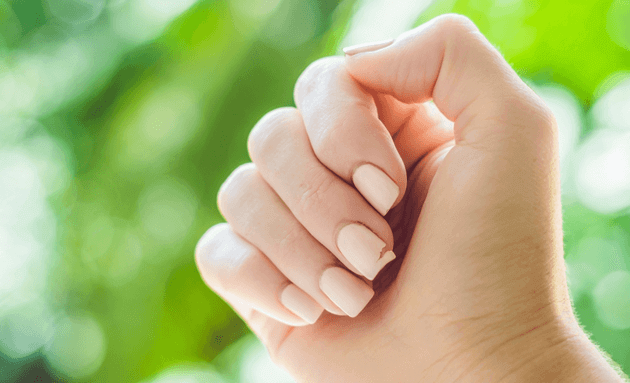
Peeling nails are generally caused by an external force on the nails. Your nails may peel if you’ve used your nails as a tool to press or open something. However, peeling nails may also be the cause of lack of iron in your body. If your toenails are peeling as well, chances are that you may have an iron deficiency. Consult your doctor about supplements you should consume. Switch to an iron-rich diet with lots of lentils, cereals and red meat.
Ridges On Your Nails
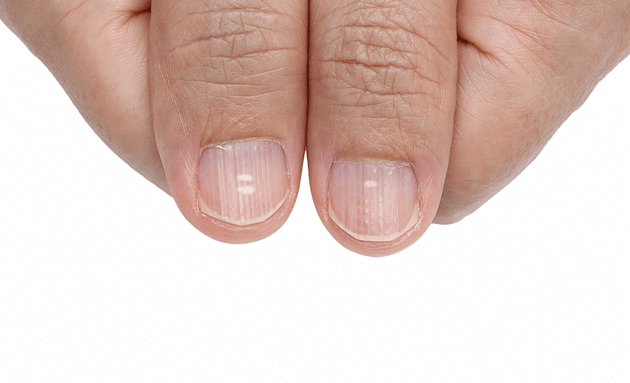
Horizontal lines, often known as Beau’s lines, look like horizontal or vertical ridges across your fingernails. Vertical ridges could be a sign of iron deficiency anaemia, whereas horizontal lines may indicate kidney disease.
Puffy Skin Folds
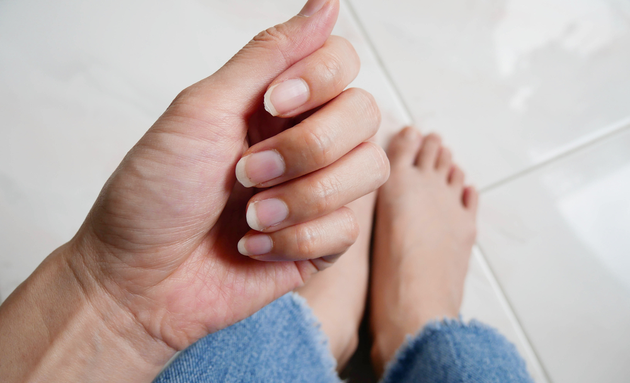
If the skin around your nails is puffy and red, it is probably due to an inflammation of the nail fold. It may be caused due to lupus (an autoimmune disease that affects different parts of your body) or some other connective tissue disorder. It can also be caused due to a fungal infection.
When Your Nails Change Their Colour
Yellow

Yellow nails are pretty common and can be caused due to a fungal infection or from a reaction of one of the products you’re using. Try natural products like tea tree oil or Vitamin E to help fight infections. If the colour change persists, it may be a sign of a serious issue and it is best to consult your doctor before opting for any supplements.
Black Lines on Your Nails
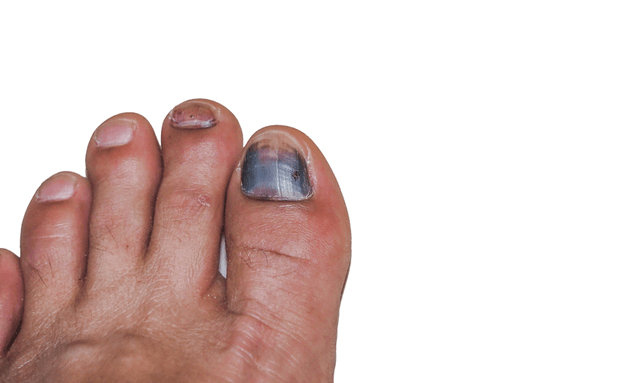
Black lines, often appearing as brown or dark red, are called splinter haemorrhage, and can appear multiple times in a person’s lifetime. It is usually caused by an external injury or trauma to your nail like slamming the door on your finger accidentally. The lines are caused due to inflammation of blood vessels under your nails and disappear as the nail grows back.
White Spots on Your Nails
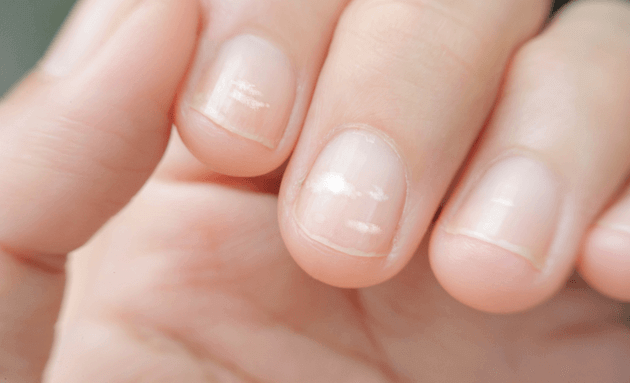
White spots generally show up during the adolescence period of your life. It usually indicates a zinc deficiency, but may also be caused due to an allergic reaction, a fungal infection, or an injury to your nail.
No Half Moons on Your Nails

Some people may not have the rounded curve at the base of their fingernails. The word fingernail moons have come from the Latin word lunula, which means little moons. If these curves are not present or have suddenly disappeared, it could be a sign of malnutrition, depression, and anaemia.
If you experience symptoms like dizziness, anxiety, sudden weight loss or gain, unusual cravings, and lightheadedness, you should see a doctor.
Blueish Tinged Nails
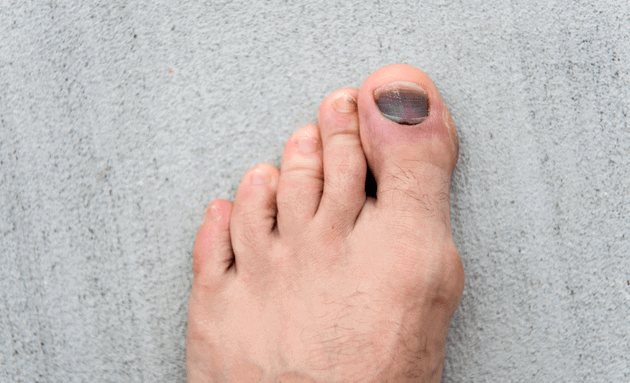
Nails that have a blue-ish tinge can be a result of lack of oxygen in the body. It could be an underlying lung disease like emphysema or some heart conditions.
Adopting a diet rich in Zinc, Vitamin B, and Iron can solve relatively most matters associated with your skin health. However, if symptoms and changes persist, it is best to get yourself checked by a medical expert.






